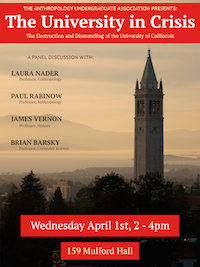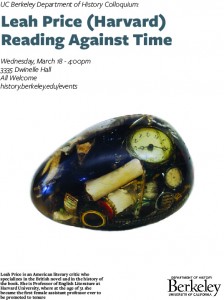by Christopher Mead
The essay begins:
In a note added to the last leaf of the fifth edition of the Anatomy of Melancholy (1638)—the last edition published before the author’s death in 1640—Robert Burton prefaces the list of errata with an attack on his printers. Addressed “Lectori,” the Latin complaint shares a number of details about the publication history of the volume that the reader holds in her hands:
Listen, good friend! This edition was begun at Edinburgh a short while ago, but was at once suppressed by our printers. After a time, with the consent of the printers of Edinburgh, it was continued at London, and finally completed at Oxford; and now, such as it is, it makes its fifth appearance in public. If the beginning does not match the end, nor the middle part either of them by reason of the numerous blunders and omissions, whom will you blame? The corrector, the printer, this man or that, or every one who has had a hand in it? As far as I am concerned, you may blame any one of them you like,—or the whole lot. Meanwhile I, the author, who have been almost cast on one side by them, am subjected to these worries, and pay the penalty for their waywardness. At their whim I am first drowned in the deep, and then caught up again and brought upon the scene, fastened to doors and posts, and exposed for any one to buy. But methinks I had better remember Harpocrates, lest I say anything too harsh against these my masters. For all my anger I keep myself in check, and,—what better—correct their faults and blunders thus.
After four editions that identify their printers, the fifth does not name one. It was, as E. G. Duff puts it, “nobody’s child,” printed in parts in Edinburgh, Oxford, and London that were then collected and put together in Oxford. The details of what led to this arrangement are unknown and subject to a good deal of speculation: Duff suggests they involve the effort of Henry Cripps, half-owner of the book’s copyright, to bring Robert Young, Scot and piratical printer, to heel.
Burton describes the broadside title pages posted by the bookseller around town as if they are his body—a literalization that makes more sense when we remember that from the third edition (1628) onward, the title page included a likeness of Burton as “Democritus Junior.” As we shall see, this paratextual scene in which the author is rescued from the oblivion of Lethean waters only to be publicly affixed to doors and posts (“auctor . . . portis & postibus affixus”) corresponds to the moments in the text proper where he identifies publication with a series of humiliating punishments wrought on his passionate body. As the richness of these protestations demonstrates, Burton accepts and even embraces the punishment of print publication, for it provides the means by which he hopes to cure his melancholic readers. In printed pages of the Anatomy, Burton enacts what might be called a eucharistic fantasy in which his body is distributed and then consumed by distant readers who are transformed from within. Paradoxically, this amplifying effort brings the author both fame and oblivion: while print allows him to communicate to a multitude of readers distant from him in time and space, the nature of the print market is such that ever-increasing amounts of printed materials ensure that his effort will soon be buried under piles of new publications. On one level, then, the press makes eucharistic amplification available to human authors for the first time. On another level, however, the press’s amplified product is a commodity bound for market. The author’s feeling of enlarged distributivity is only temporary: soon he will be forgotten, replaced by newer products—unless, of course, he is resurrected in the form of a new edition.
These passionate scenes of authorial display, often dismissed by critics as characteristic bits of Burtonian excess or even fun, testify to the remarkable historical period in which The Anatomy of Melancholy circulated. During the long transitional period between the small print runs of the incunabula and the rise of the corporately authored newspaper in the early eighteenth century, authors turned to the Eucharist—Christ’s chosen means for communicating his bodily presence to believers separated from him in time and space—as they sought to conceptualize their mechanical amplification through the press. Because the Eucharist has often been parsed for its doctrinal content, especially since the reformation, its original status as a medium of communication tends to be overlooked. For Burton, along with a number of other important English authors, the Eucharist offers a way to think through the still novel feeling of being amplified “in print.” Doubly Christological, the author’s dissemination in type involves suffering and fame in equal measure.
It is no accident that the eucharistic potential of typographic life is felt most strongly in England, where late-medieval expressions of sacramental culture like the Charters of Christ allowed writers to imagine duplicative transcendence by adopting Christ’s subject position as their own. Under manuscript conditions, the author’s ability to write eucharistically is limited, the writer’s textual amplification constrained by the slowness and irregularity of chirographic reproduction, a method of duplication that differs greatly from that of the eucharistic wafer, recently described by Aden Kumler as a “serially produced monochrome multiple in a world filled with handcrafted unica.” In the Charters of Christ, writers imaginatively transcend these conditions by mapping the human technology of the charter onto the divine technology that is the Eucharist; with the rise of print, however, they are able to overcome these conditions altogether. Of course, while the Eucharist and print are analogous, they are not identical: Christ’s miracle binds Satan, but publication in type is Faustian at best, involving a loss of agency to capital, public opinion and, as Burton describes in his prefatory note, to the dominators who own the mechanical means of his literary reproduction. To understand the logic behind what might otherwise seem an unlikely alignment of eucharistic and typographical reproduction, we must turn to the recent history of the salvific technology that Burton seeks to emulate. Continue reading …
CHRISTOPHER MEAD is a PhD candidate in English at the University of California, Berkeley, where he is currently completely his dissertation, “Mass Communication: Eucharistic Authorship in Early Modern England.” His research interests include the history of technology and the relationship between religion and literature.



